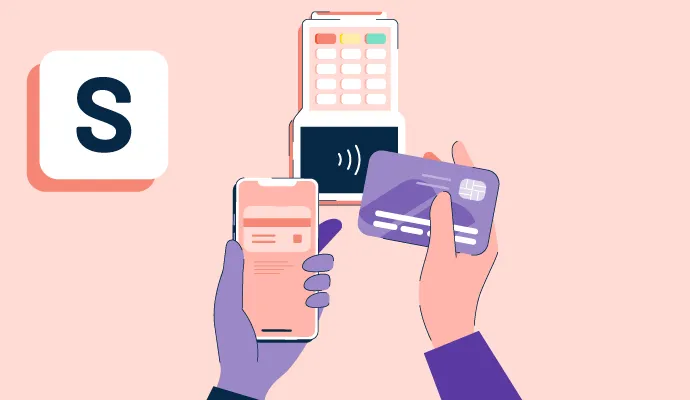A college student scrolls through an online marketplace, looking to purchase a new $500 tablet. Instead of reaching for a credit card (or just deciding to wait) she taps “Buy Now, Pay Later,” agreeing to four interest-free payments of $125. It’s seamless, instant, and feels far simpler than traditional debt.
Buy Now, Pay Later (BNPL) services have taken the world by storm. Millions of people around the globe have used the service to purchase things that they need but can’t pay for all at once, driving nothing short of a quiet revolution that is taking place across consumer finance. But is BNPL all that it seems? Are there any quiet implications that could have devastating effects to those who don’t fully understand it? What else remains to be seen?
What is Consumption Smoothing?
Even before BNPL services, consumers sought to maintain stable living standards over time—often being forced to spend more during lean months, while saving more during surplus periods to prepare for the unexpected. For decades, traditional tools like tools like credit cards, personal loans, and savings accounts have been the method through which this has been achieved, helping households buffer shocks and spread out large expenses.
The Rise of Buy Now, Pay Later (BNPL)
Over the past few years, BNPL has surged from a relatively niche fintech innovation to a mainstream, extremely common payment method used by major e-commerce platforms across the internet. The fundamental transformation in how consumers pay has been spearheaded by companies like Affirm, Afterpay, and Klarna, offering consumers the ability to split purchases into interest-free installments. The appeal of the service is clear: it promises flexibility without the burdens of traditional credit cards, no hard credit checks, and a user-friendly digital interface.
BNPL is becoming a fixture in the modern financial technology ecosystem, transforming how people approach everyday spending. The system has particular appeal among millennials and Gen Z consumers who are skeptical of revolving debt but still want financial autonomy. The statistics back this up as well: the number of users grew by 97% in 2021 alone, and while growth has leveled off since then, it has steadily grown in the years since. [1] Putting this into dollar values, the global BNPL market size was valued at $30.38 billion in 2023 but is expected to grow to $167.58 billion by 2032 at a compound annual growth rate (CAGR) of 20.7%. [2]
A Cause for Concern?
Much of the appeal of BNPL services come from their simplicity: users get immediate access to products, splitting payments into smaller chunks without having to pay additional interest. However, many risks remain that individuals often fail to take into account.
The first risk comes from the inherent nature of BNPL: because of its ease of use, many users (particularly those with limited financial literacy) take on multiple BNPL plans across multiple platforms, increasing payment obligations while often not fully grasping the total repayment burden. When payments stack up, missed deadlines can trigger late fees, account suspensions, or even referrals to debt collectors. Indeed, this cycle—that of easy credit, overconsumption, and mounting obligations—is reminiscent of the very dynamics that made traditional credit risky; thus, as BNPL usage grows, so does the risk of normalized overleveraging disguised as convenience. [3]
Second, while most popular BNPL services are largely interest-free, late payments can accrue high fees and interest payments. Thus, if consumers aren’t vigilant with payment schedules, the amount needed to pay could steadily build, eventually skyrocketing to make the product far more expensive than it would have been otherwise.
Finally, the rapid adoption of BNPL is introducing new challenges to the way credit risk is managed at a broader level. Unlike traditional credit products (like credit cards and mortgages), many BNPL services do not perform thorough credit checks or report payment behavior to credit bureaus; in turn, this creates a blind spot to traditional lenders, who would be unaware of a consumer’s growing short-term debts. In addition, consumers can also stack multiple BNPL purchases across different providers (like those mentioned earlier), decentralizing debt burdens and making it more difficult to measure risk. As a result, traditional credit scoring models risk becoming outdated, failing to capture this new layer of unsecured, unregulated debt. For financial institutions, this raises concerns about the long-term sustainability of lending models when BNPL usage is widespread but often invisible to the formal credit system.
Conclusion
Buy Now, Pay Later services have rapidly spread across the financial technology industry, reshaping the consumer credit landscape. By making spending frictionless and debt feel invisible, BNPL is changing how individuals manage their finances and make decisions—but often at the cost of transparency and, if one is not careful, long-term financial stability. With growing concerns regarding credit invisibility and consumer overextension, consumers and lenders alike ought to be wary about the emerging prominence of these services and their impact on credit as a whole.
Sources:
[1] https://www.emarketer.com/content/us-bnpl-user-growth-continues-through-2028-slows
[2] https://www.fortunebusinessinsights.com/buy-now-pay-later-market-106408
[3] https://councils.forbes.com/blog/the-surge-of-buy-now-pay-later
[4] Image

